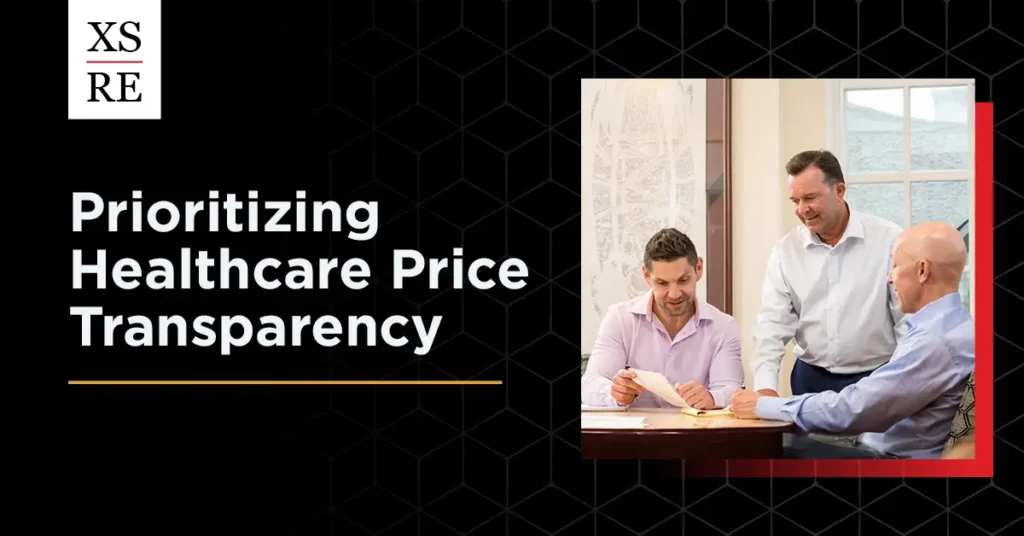Trump Signs Executive Order Prioritizing Healthcare Price Transparency Enforcement

A new executive order directs federal agencies to strengthen enforcement of healthcare price transparency rules. While no new requirements are introduced, employers should prepare for increased regulatory focus. Learn what this could mean for your organization.
On February 25, 2025, President Trump signed an executive order titled “Making America Healthy Again by Empowering Patients with Clear, Accurate, and Actionable Healthcare Pricing Information.” The order augments Trump’s prior efforts to increase transparency in healthcare pricing for hospitals and health plans, initiated in 2019 with Executive Order 13877.
Generally, the newly published executive order directs the DOL, HHS, and Treasury (including the IRS) to take certain steps within 90 days to improve and enforce existing price transparency requirements. Specifically, the agencies are tasked with two main directives. One is issuing updated guidance that ensures pricing information is standardized and easily comparable across health plans. The other is updating enforcement policies designed to ensure compliance with the transparent reporting of complete, accurate, and meaningful data. This includes rules that would require disclosure of the actual prices of items and services (not just estimates of prices).
The order does not itself ask for specific modifications to the current price transparency rules, but focuses on rapid regulatory action aimed at pricing information transparency and standardization and the related rules for enforcement.
Background on Current Price Transparency Rules
As a high-level background, the current price transparency rules are directed at hospitals, insurers, and group health plans. The Hospital Price Transparency Rule requires hospitals to maintain a consumer-friendly display of pricing information for shoppable services and a machine-readable file (MRF) with negotiated rates for all items and services. There have been ongoing reports of hospitals not fully complying with these transparency requirements.
The Transparency in Coverage Final Rule requires group health plans and insurers to post on a public website an MRF of standard charges relating to the following:
- Negotiated rates for in-network covered items and services.
- Historical out-of-network billed charges and payment amounts for a recent 90-day period.
- Prescription drug negotiated rates and historical net prices. (Note, however, that the posting of the prescription drug MRF has not yet been implemented; please see our related October 10, 2023, article. Perhaps the executive order will expedite the prescription drug MRF posting timeline.
Many employers/plans rely on the carrier or TPA to assist with this MRF posting requirement. In addition, plans and insurers must also provide participants with an internet-based price comparison tool that provides details regarding the charges for certain services. This requirement includes providing cost-sharing amounts for items and services from in-network providers for a specific region.
The goal of the current price transparency rules is the creation of a more competitive pricing environment with a longer-term goal of lowering overall healthcare costs by putting downward pressure on prices. By facilitating access to clear information, the rules are intended to enable plan sponsors and participants to better evaluate healthcare options and make cost-conscious decisions.
Executive Order’s Impact on Group Health Plans
As background, executive orders generally do not have the same force as a congressionally passed law and do not instantaneously change compliance requirements or otherwise have immediate effectiveness. Instead, an executive order directs the federal administrative agencies (in this case, the DOL, HHS, and Treasury) to take conforming actions during the coming weeks and months via new regulations (a process generally subject to prescribed and specific timeframes, checkpoints, and comment periods).
However, even if the impact of this new executive order may not be immediate, employers should prepare for rulemaking activity and increased enforcement attention on these transparency requirements. While the exact extent of the order’s impact is difficult to ascertain at this point, the order reflects the Trump Administration’s priority on healthcare price transparency. With the potential increased enforcement attention, group health plan sponsors should review their policies and practices to ensure compliance with the current transparency rules and their related fiduciary obligations. Sponsors should also stay closely attuned to developments regarding this new executive order.
